#Kingdom Ivan icons
Explore tagged Tumblr posts
Text

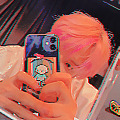

𐐪 kingdom ♡ like/reblog and credits if you use 💌










#yizaicons#yi#icons 120x120#kingdom ivan#kingdom hwon#kingdom mujin#kingdom ivan icons#kingdom hwon icons#kingdom icons#kingdom mujin icons#kingsom layouts#kingdom packs
19 notes
·
View notes
Text


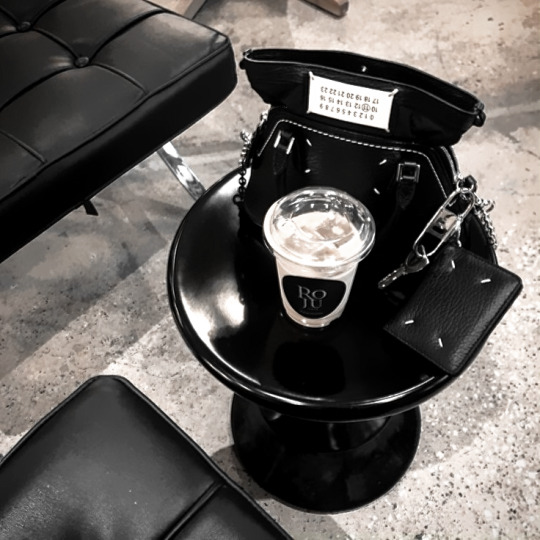
⠀ ⠀ 𝗴𝗲𝘁 𝘄𝗶𝗹𝗱 천벌을 받을 때까지! ⚔️
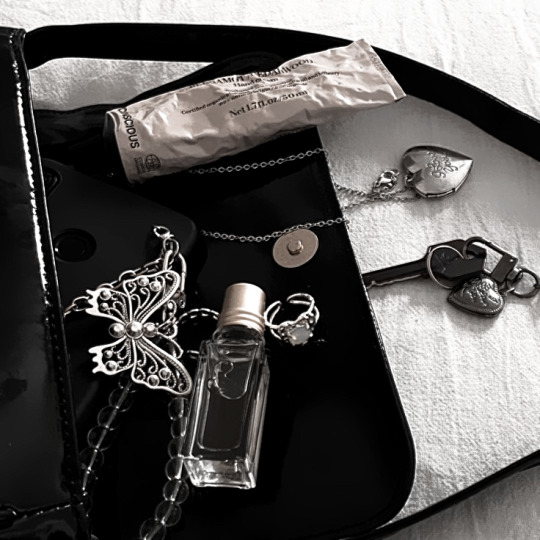
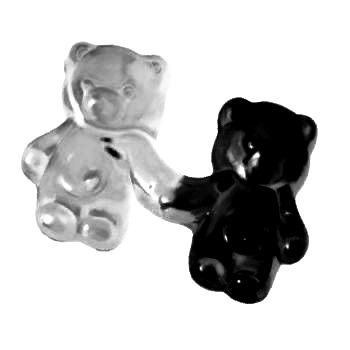
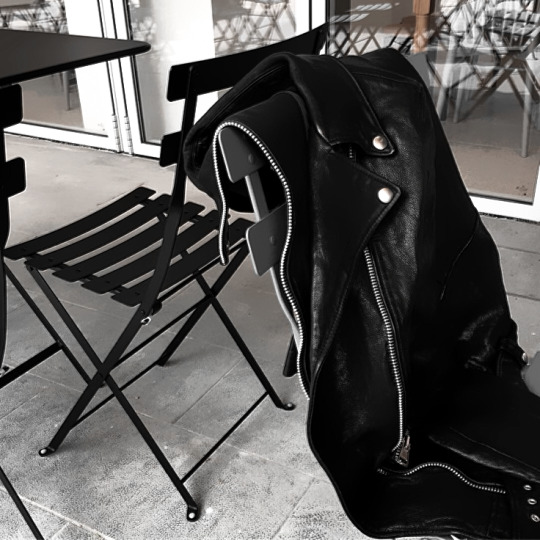
⠀ ⠀ ⠀ ⠀⸺ 𝘀𝗼 𝘄𝗵𝗮𝘁 끝까지 따라가 @colour-source



#colour-source#ivan kingdom#icons#ivan#moodboard#kingdom#soft moodboard#soft icons#kpop icons#psd icons#kpop moodboard#random moodboard#black aesthetic#minimal#aesthetic#clean aesthetic#park yoosung#twitter icons
48 notes
·
View notes
Text
Kingdom - Dystopia
Gifset edited for Icons/Pfps - Part 1/1





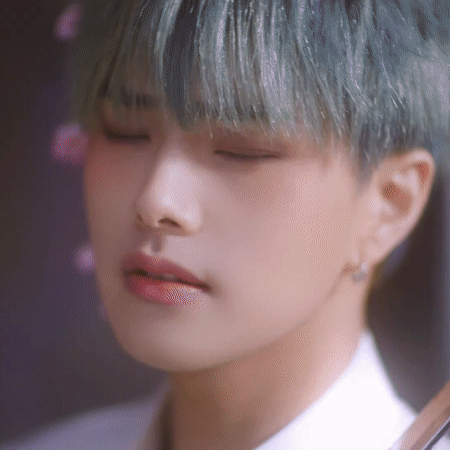






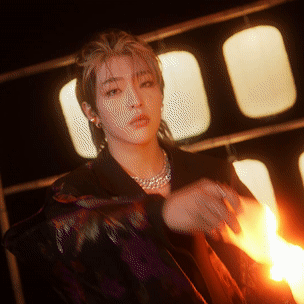
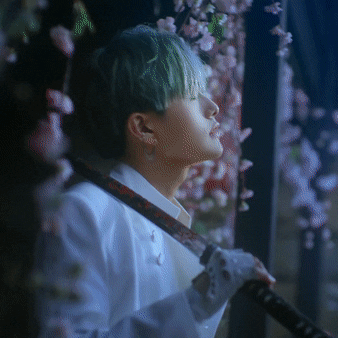




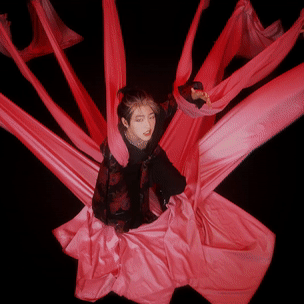



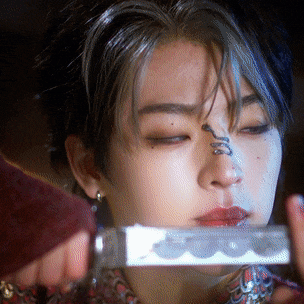


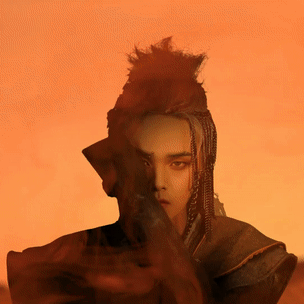
#Kingdom#kingdom gfent#킹덤#kingdom dystopia#dystopia#arthur#ivan#dann#louis#mujin#jahan#hwon#gifset#kpop gifs#icons#kpop
27 notes
·
View notes
Text



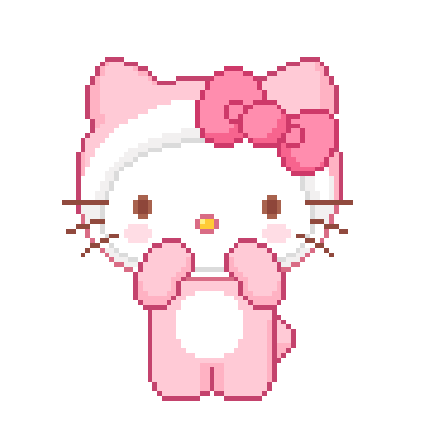


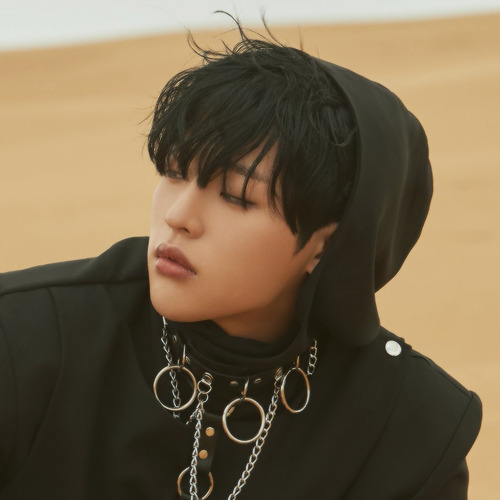
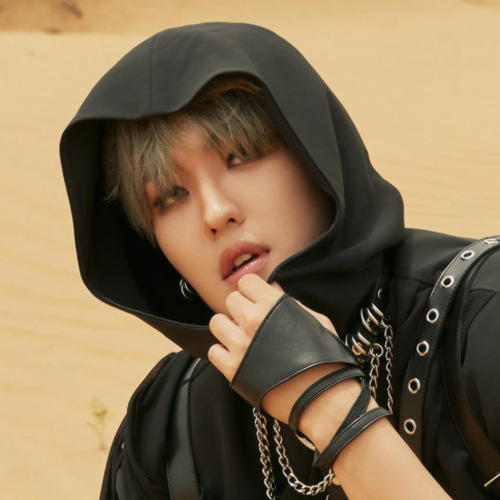

☆★ like or reblog if you saved + ^_^ !
#icons#kpop icons#jahan icons#hwon icons#dann icons#arthur icons#mujin icons#louis icons#ivan icons#kingdom icons#jahan#hwon#dann#arthur#mujin#louis#ivan#kingdom
6 notes
·
View notes
Text
It's the 20th of November, which means that today we're going to say farewell to the birthday letters for this year. It has been a pleasure managing to cover another K-pop group and I hope I'll manage to redo this tradition next year with a new group, new collages and new heartfelt letteers!
That's enough of the sad part, let's celebrate our little crocodile over there!
Happy Birthday Mujin! 🥳
As always, have the pleasure to look at the collage I made for him 🥺

Guess what? Instead of adding another member, I wanted to add his cat. I'm a genius, I must admit.
I confess that I always wanted to include idols' pets in the collages, but not every idol has a pet, and adding them would have made the collages a little…inconsistent, I think?
Maybe in future collages, I will add more pets, who knows.
And now, have the pleasure to read the last letter for this year.
Talking about Mujin is...complicated. The main reason is that if it wasn't for Ivan (especially Ivan) and Dann, Mujin would have been my bias. Don't worry, he still managed to enter into my list. He's one of my wreckers...which makes my life as a kingmaker pure hell bliss. I wanted to make this intro to highlight how Mujin had every requirement to get into my bias list. Heck, I think I would have made a lot of jokes about him being a sort of little brother because I'm older than him by only eight months. Eight months! Isn't it funny?
Anyway, you might wonder what requirements he had apart for the eight months thing. Well, let's start with the most "professional" ones.
First and foremost, his character and his own album on HOK. I think I'm becoming repetitive recently with HOK but when I say that Mujin's album is one of my favourites from HOK, I truly mean it. I'll keep repeating it over and over, but this album is in my top 3 and I don't think I'll ever get over this. And his album is also the first one where I experienced, during comeback season, keep in mind this, his writing skills. I confess that I didn't check the other albums' credits and see if he wrote other songs before My Wave, but if I tell you that My Wave is one of my favourite b-sides, I truly mean it. This boy has a huge writing talent and it deserves to shine more.
His character in Kingdom's story and lore is also one of my favourite ones. I think I'm starting to have a thing for tragic characters for real, especially if those ones were beloved heroes at first. As time as I write this letter, it seems that his character is turning to the dark side, although I prefer waiting for the next comeback to see if I'm right or not. And if he manages to become a dark side character...uhm, I don't know, I just hope he'll be fascinating.
And his voice? Heck, the people who listened to his covers will probably agree with me that he has a beautiful voice whether he's singing or rapping.
Of course, all these talents are also compensated by his duality. This talented boy is the same one who ends up making the cutest and the loudest noises ever. His dolphin scream has become one his most iconic sounds along with his laugh! They make him immediately recognisable.
And what about some of his hobbies? Some of you are probably thinking about some of his vlogs where he shared a huge interest in clothing. His latest birthday vlog is literally a behind scene of a photobook! But I was also thinking about his knitting. Even tho it's not shown that much nowadays in the videos, I always found his knitting hobby very fascinating. You don't always find your typical idol finding some time for knitting. And if the idol whose knitting is Mujin then the simple action of knitting becomes cute too.
And the last important thing that makes Mujin very dear and important to me is...his cat. I'm sorry, I'm a cat person and his cat is literally a fluffy white cloud that deserves all the love and cuddles from Mujin. I want more pics of that cat...or videos of Mujin cuddling his cat. Or both. Or anything with his cat in it. Just his cat. I love that cat.
Dear Mujin, your letter will close this year's tradition and even though I don't know if I'll manage to do it again, I want to say that I'm glad your letter will be the last entry. Your talents and your cute and fun personality deserved to be highlighted and shown. During the years, you managed to give us a lot of precious moments that Kingmakers will keep with them forever. Please, be always healthy, don't get hurt and keep chasing your dreams.
My birthday wish for you is that you'll manage to get a modelling contract. That's incredible, uh? But honestly, after seeing how much you're passionate about modeling and how, in recent vlogs, you were trying to fix your styling choice, I think becoming a model would fit you a lot. I can't wait to see you as a brand ambassador, it doesn't matter if the brand is little or not.
Happy birthday, my buffed alligator 🐊
3 notes
·
View notes
Text
Welcome~☆!
I am rwbyofmyheart, but the names you can call me are Ruby or Elle. (Obviously neither is my actual name, but they are what I will be using for this tumblr blog to protect my privacy.) I go by she/her pronouns. When I post, I will mostly be posting fanart, English lyrics for kpop/jpop songs, or anything somewhat similar. I am under 18, so I’m gonna try to keep this blog PG-13, but I will occasionally post content from Hazbin Hotel or Helluva Boss. This post has links to some of my fanart/lyrics along with some fandoms I’m in. I will try to keep it updated, but we’ll see.
Fandoms I’m in (some not as active as others, and there may be more not on the list):
RWBY (ofc)
Twisted Wonderland
Alien Stage
Ensemble Stars
Milgram
Honkai: Star Rail
Genshin Impact
Cookie Run: Kingdom
Danganronpa
Helluva Boss
Hazbin Hotel
Amazing Digital Circus
Project Sekai/Colorful Stage
Reverse: 1999
Digimon
Pokémon
Winx
Smity and Majesty
Nevermore
Cursed Princess Club
Night Owls & Summer Skies
The Four of Them
Dreamcatcher
Loona/ARTMS/Loossemble/Chuu/Yves
Everglow
Stray Kids
Twice
Itzy
Nmixx
Blackpink
(G)I-DLE
K/DA
Heartsteel
Purple Kiss
Fanart:
Whatever the heck this is
Whatever the heck this is (pt. II)
Steamboat Willie
Link
RWBY x K/DA (wip)
New Year TADC & RWBY drawings
Twisted Wonderland
OC Loading Screen Icons
Ace shitpost
Lute Fanart
Annabel Lee
English Lyrics:
Alien Stage
Ruler of My Heart
Unknown (Till the End)
Cure
Black Sorrow
Blink Gone
Dreamcatcher
Rising
We Are Young
OOTD
Reason
TWST OC Masterlist
Pokémon Shield Nuzlocke:
See side blog: @nuzlockeofmyheart (on hiatus)
Alien Stage Tumblr AU
@mizi-alnst-official
@sua-alnst-official
@till-alnst-official
@ivan-alnst-official
@luka-alnst-official
@hyuna-alnst-official
@dewey-alnst-official
@isaac-alnst-official
Other:
Realization about Bumbleby
#rwbyofmyheart#english lyrics#fanart#masterlist#kpop english lyrics#rwbyofmyheart english lyrics#rwby#k/da#dreamcatcher#disney twst#twst#twisted wonderland#shitposts#alien stage#vivinos#vivinos alien stage#alnst#greenlight volume 10#alien stage tumblr au
9 notes
·
View notes
Text
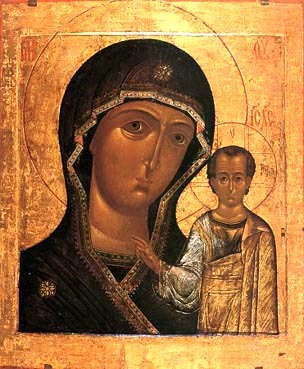
The wonderworking Kazan Icon has great significance for the faithful of Russia, and Russian Orthodox families treat it with unparalleled reverence. The magnificent Kazan Cathedral was built in Saint Petersburg, to house the Icon.
For the most part, it is this Icon that blesses the young to the crown, and its peaceful radiance of an unsleeping lamp illuminates the children. The meek face of the Mother of God looks lovingly at the growing children. In Moscow, the Kazan Cathedral stands on the historic Red (Beautiful) Square, opposite the Kremlin walls, two dozen steps from the Ivḗron chapel, in view of the monument to Pozharsky towering on the square. It stands as an unshakable remembrance of the mercy of the Mother of God toward the Russian land during one of its most terrible years.
The Kazan campaign of Tsar Ivan the Terrible resembled a Cross Procession. It seemed that the goal was to bring a new flock to Christ rather than to subjugate the new kingdom to the Muscovite Tsar. Kazan fell on the Feast of the Protection of the Mother of God. An explosion from the wall and towers of Kazan was heard when, during the Liturgy in the mobile royal church, the deacon intoned the petition of the Great Litany: "That He may aid him and subdue beneath his feet every foe and adversary...."
After entering Kazan the next day, the Tsar immediately laid the foundation for a cathedral in honor of the Annunciation of the Most Holy Theotokos. At the same time, the Tsar determined a place for the construction of other churches, and the following year a Diocese was established in Kazan and Saint Guria became the first Bishop of Kazan.
Under the zealous disseminator of the light of Christ, Bishop Guria, and his successor, Saint Germanos the affirmation of the Faith in Kazan was successful, but then the Moslems made a strong resistance. At this time the Mother of God decided to strengthen Orthodoxy, and she was pleased to glorify her Icon.
In 1579, after a terrible fire that destroyed half of the Kazan Kremlin and part of the city adjacent to it, the Moslems began to say that the Christian God had no mercy for the Russians and showed His wrath by this fire. "The faith of Christ," the chronicler remarks, "has become a proverb and a desecration." Then the Lord showed His mercy.
A certain archer intended to build a new house on the site of the conflagration. In a dream, the Mother of God appeared to his nine-year-old daughter Matrona, ordering her to tell the Archbishop and the city chiefs that they would remove her Icon from the bowels of the earth, and in another dream, the Mother of God pointed out the place where the Icon was hidden on the ashes of the burnt house. The girl told her mother about her dream, but she attached no importance to her daughter's words. The vision was repeated, but the mother did not pay attention to the command of the Mother of God, transmitted through the mouth of her child. Finally, for the third time, in a dream, the girl saw the Icon itself, from which a formidable voice was heard: "If you do not reveal my words, I will appear in another place, but you will perish."
The girl woke up shocked and frightened and began to call her mother,demanding that she obey the command of the Queen of Heaven. Then, finally, she agreed and she took her daughter to the officials and to Archbishop Jeremiah. But none of them believed the girl's words.
On July 8, returning from fruitless walks, the mother stood at noon and began to dig at her daughter's direction. Others also helped her, but the Icon did not appear. Then Matrona began to dig, and near the place where she was in the burnt house, soon the treasure was found. She saw that the Icon of the Mother of God was covered with an old sleeve of cherry-red cloth. The face on the Icon was fresh, unspoiled, as if the Icon had just been painted. Those who were present at the discovery of the Icon immediately spread the news throughout the city. When the authorities learned about the event, everyone gathered at the archer's house; the Archbishop of Kazan made a Cross Procession with the clergy to the place of the apparition, and the Icon was solemnly transferred to the parish church of Saint Nicholas, whose Icon is popularly known as "of Tula." Its rector was the priest Errmogenes, later Metropolitan of Kazan, and later Patriarch of All Russia (+ February 17, 1612), who reposed during the Time of Troubles for Orthodoxy. He described the event of the appearance of the Icon.
A solemn Moleben served at the church of Saint Nicholas, and then the Icon was carried to the Annunciation Cathedral. On the way, the first miracle occurred. a man named Joseph, who had been blind for three years, was able to see. Then, in the cathedral itself, another blind man named Nikḗtas was healed. Afterward, it was noticed that many healings took place before the Kazan Icon, especially for those who suffered from afflictions of the eyes.
Soon the Archbishop and the officials sent the Tsar in Moscow a detailed report on the discovery of the Icon with an exact copy. The Tsar ordered a convent to be built for forty nuns on the site of the apparition, and to keep the Icon there. The young girl Matrona and her mother were the first to be tonsured in the new monastery. In addition to the original churches, a new stone church was soon built, with a trapeza. One hundred souls were given for the maintenance of the monastery. In 1594 a new extensive cathedral of the Dormition of the Mother of God was built and consecrated by Metropolitan Errmogenes the following year. At the same time, the number of nuns was increased to 64; rich contributions of utensils, icons, and vestments were brought to the monastery; the Icon was covered by a riza adorned with gold, precious stones and pearls.
New magnificent decorations were placed on the Icon by Empress Katherine. In 1798 she decided to build another church to replace the dilapidated temple which had stood for two hundred years. She donated 25, 000 rubles for this purpose, and the church was consecrated in 1808.
The mind of a believer is involuntarily struck by one circumstance. The appearance of the Kazan Icon signified the triumph of the Russians over the Moslem Tatars. And all the time, while the cherished shrine remained in Kazan, they considered themselves safe from the east.
On the night of June 29, 1904, several thieves broke into the cathedral church of the Kazan Monastery and after stealing it, took the miraculous Kazan icon with them. The robbers have never been found, and the Icon disappeared without a trace. Then we were defeat came from the east. There are two opinions egarding the fate of the true Kazan Icon.
Some believe that the original Icon was kept in Moscow and transferred there at the pious desire of the Tsars, But without publicity, so as not to upset the residents of Kazan. The Russian Tsars liked to concentrate these shrines in Moscow, from all places. The Hierarch Ermogenes could have brought this Icon from Kazan with him, when he moved to the patriarchal cathedral. At the transfer of the capital to St. Petersburg, supporters of this opinion say, it was this Icon that was among others, that was moved to the new capital; therefore, the real Kazan Icon was in the St. Petersburg Kazan Cathedral. Others claim that the original Kazan Icon was with Pozharsky's army and, arriving in Moscow, she stayed in the cathedral built for her by Pozharsky on Red Square. The dimensions of this Icon were much less than the missing Kazan Icon, which remained in St. Petersburg.
Be that as it may, all three Icons were great sources of the grace of the Mother of God. The St. Petersburg Kazan Icon is the most cherished and beloved shrine of St. Petersburg. The faithful always stand before her, and many businessmen with a strong religious feeling come every day to venerate the Icon, as if in the midst many activities they took a minute to go and greet their Mother.
In the Kazan Cathedral, Kutuzov rests from his immortal historical exploit. When in 1812, heeding the voice of the people, who demanded that he be placed at the head of the Russian armies, Alexander I appointed Kutuzov as commander-in-chief, the latter, before leaving for the army, stopped by to pray in the Kazan Cathedral. People harnessed the horses of his carriage and cried out: "Drive out the French!" After a Moleben, the Kazan Icon was placed on Kutuzov, who was always known for his piety, The Mother of God did not reject the hopes which the old commander entrusted to her. And the field marshal, with indescribable glory, returned in a coffin to repose in the Kazan Cathedral.
There is another memory from that time - a magnificent iconostasis was cast in silver. The silver was stolen by the Cossacks from the French after they had looted the Moscow churches, and they brought the silver as a gift to the Kazan Cathedral. Beneath the wonderworking Icon, in gold letters, there is a brief notice: "The diligent offering of the Don army."
Something wonderful blows under the highest arches of the Kazan Cathedral between the majestic granite pillars with banners attached to them, symbols of past victories. Both the Moscow Ivḗron Icon, and the St. Petersburg Kazan Icon stand in the center of noisy and lively metropolitan life. There, beyond the walls, is the world and its deeds. And here — eternity, a quiet, thoughtful eternity. After standing for at least a few minutes in this thoughtful silence, you already feel, how much further one becomes from the temporal world, and how much closer to the world of eternity. And there, before the Icon, they light their candles with fervent supplications, and from the ground tises the hymn to the Mother of God: "O fervent intercessor...."
The origin of the Icon in Moscow's Kazan Cathedral is as follows. She was sent from Kazan to Prince Pozharsky, who went to liberate Moscow with the squads of the northern cities. The Russian soldiers prayed fervently to the Mother of God, asking her to help them rescue the capital. The Poles locked themselves in Kitay-Gorod, which surrounds the Kremlin in a narrow ring. In the Kremlin the Greek Archbishop Arsenios languished as a captive of the Poles..Saint Sergius of Radonezh appeared to him and said that through the prayers of the Mother of God, the reigning city was delivered from its enemies. The news of this appearance reached the Russians and animated them. On October 22, they drove the Poles out of Kitay-Gorod, and then the Poles surrendered the Kremlin. The clergy came out to meet the Russian army with the cherished Moscow shrines, and at the head of the Russian squads was the Kazan Icon.
In remembrance of this event, another commemoration of the Kazan Icon was established on October 22, first in Moscow, and then throughout Russia.
The original Kazan Icon disappeared during the chaos of the Revolution, and thieves stole the jeweled riza from it. It has been suggested that they may have destroyed the Icon, since they were more interested in the jewels
14 notes
·
View notes
Text
I need to ramble about my cardverse AU. I was daydreaming about it alot while "redesigning" Arthur's Queen of Spades outfit 🤲 I might actually draw cardverse or expand on this because I have so many things to explain about
Spades
This kingdom is known for many things: fashion, pollution, modernism, technology, clocks and their obsession with lions but the most famous would be the royalty. Arthur III, while he has never been crowned unlike King Alfred, is the first ever Queen to have power over a kingdom (especially while there's a king) as kings are the only ones who can rule. He has terrorized politicians, own white lions as pets, psychologically torture/execute people, wearing black lipstick (this is something relevent with the Hearts Kingdom) and having more power than the King. Though it's a kingdom known for fashion, it also has strict laws over what's reserved only for royalty or such as lion fur/skin (the wealthy are an exception) and the colour purple, which dates back to Roman times, though recently, the colour purple has been seen on products and companies if it has been officially favoured by the Queen Arthur III. So if you visit the Spades Kingdom, don't wear any purple or lion. (Idk where to add this so I'm adding it at the end but this is just some fun fact that I love and want to talk about more: were no records of any other royalty nor relative named Arthur even though he's titled as the third Arthur to be royalty. He added it himself. because 3 is his favourite number 💀. He would execute one politician - either for dinner or to import to the Diamonds Kingdom - for every day the government wouldn't make him the third Arthur and ofc by the 8th day they were getting understaffed from this so in the end, they allowed him to be titled Queen Arthur III.... He is so petty and a menance but it's something that would likely happen lmfao).
Hearts
Though, their royalty was never as known as the Spades, it is well very known for their aesthetics, music, art, romance, history and sports. Many of their architecture hasn't been modified since the renaissance era and in some areas, even the attire hadn't changed. The Hearts are very particular on makeup and attire so , they even have not-so-secret unspoken lipstick code which may not be as relevant to the common people anymore, it is more important on royalty. Many artists, writers and historians go there to make a living while others may go there for romance or the pretty architecture as many romance stories are set in Hearts. The Prince, Feliciano, is labelled as 'the face of Hearts' by Heartians but internationally as a romantic icon (sometimes a sexual icon but idk I think that would be King Francis IV). The Spades are fond of Feliciano for embracing modernism and doing things that would be frown upon for Heartian royalty like not abiding to the lipstick code (but thats okay for him to break the rules because he's the favourite out of the Heartian royals).
Clubs
Many people would think the Clubs Kingdom would be filled with greenery and nature by their symbol of a three-leafed clover but in reality it is a very snowy. The reason behind the clover may be from an old Cluban folktale or their obsession with luck and magic. The Clubs are famous for their competitiveness, tourism, and their strong belief in luck and magic despite having the most science labs/schools in the world. The King, Ivan the First , is always seen shirtless and smiling - a standard for Cluban royalty to show their health, luck and strength against harsh snow weathers.
Diamonds
Being known for their wealth, they are known for their films/theatres, mining sites, heavy surveillance, vast greenery, prestigious schools and famous cuisine. It is a kingdom many people go to for either their wealth or education meaning you'll find alot of aspiring actors, cooks and archeologists studying here (and rich snobs, though, you'll find those kind of people up north). They have plenty of famous cuisines that originated there that enjoyed around the world like Ligone Fries and Burgers, but they have their fair share of really questionable dishes like: shepherd-dog pie, human steak and cub stew (they are not as common nowadays, but there are no laws on what you can't eat in the Diamond Kingdom so you can eat these). The King - Francis IV - is always either oversees, or in small villages talking to locals. The Diamonds are stereotyped as very snobby, paranoid poshos, but in reality they are really laid back and hospitable.
Jokers
The Jokers are forbidden land that hadn't been "claimed" by any of the kingdoms. They either prank or hunt down people who are seen as threats to the land and therefore are depicted as savage barbarians. Not much is known about them and are usually either villains or silly goofy pranksters in many stories. The information known about them has been rumored to be destroyed and possibly also forgotten by Kingdoms.
#Queen Arthur III sounds worse than Henry VIII#hetalia#hws england#hws italy#hws america#hws russia#hws france#cardverse#rambles#the people in this au are quite amoral (especially the spades) I would not like to be there lol#I like to imagine the jokers are the most sane people in the au#They are the most sane people in cardverse.
42 notes
·
View notes
Photo

Icons of Bulgaria
Introduction to Bulgarian Icons
Bulgarian icons have a history that stretches back over a thousand years. This rich tradition is closely linked to two major events in Bulgaria’s past.
Adoption of Christianity in 865
In 865, Bulgaria became the first among the Slavic nations to adopt Christianity as its official religion. This event marked the beginning of Bulgarian iconography, a significant development in Bulgarian art. Following this change, artists from the East, along with Byzantine missionaries, came to Bulgaria to decorate the new Christian temples. Bulgarian icon-painting adopted the styles of Byzantine and Eastern Orthodox art but also developed a unique national character.
Early Bulgarian Icons
In the 9th and 10th centuries, ceramic icons became popular in Bulgaria. These were often mass-produced, as evidenced by the discovery of furnaces and workshops for glazed ceramic tiles in Patleina, near the old Bulgarian capital of Preslav. One of the most famous icons from this period is the icon of St. Theodor Stratilatus, created in the 9th-10th centuries. It consists of 20 glazed tiles and showcases the best artistic traditions of the Orient, particularly Cappadocia. However, the technique used in Bulgarian icon-painting was unique and not known in the East at the time. This highlights the First Bulgarian State’s contribution to Orthodox art Tours Bulgaria.
The Golden Age of Turnovo
During the 13th and 14th centuries, Turnovo, the capital of the Second Bulgarian Kingdom, experienced a cultural and artistic renaissance. This period is often referred to as the “golden age” of Patriarch Eftimii’s literary reform, which greatly influenced Orthodox Slavic literature and the Turnovo art school. The rock temples near Ivanovo in the Rousse district feature exceptionally fine frescoes, representing the pinnacle of Bulgarian art from the Paleologus renaissance. Another notable example is the exquisite two-sided icon, painted with professional artistry, which was presented around 1395 to the chapel of the Poganovski Monastery by Helen Paleologus, a granddaughter of the Bulgarian Tsar Ivan-Alexander.
The Impact of Ottoman Rule
The second significant event affecting Bulgarian iconography was the fall of Bulgaria to the Ottoman Empire. From 1393 onwards, the Bulgarian Church lost the support and funding of the state and its own patriarchate. This had a detrimental impact on church art, and the planned destruction of monasteries and churches led to the loss of many icons. Despite this, icon painting continued, though its development was uneven.
Continuation of Icon Painting
Even under Ottoman rule from 1396 to 1878, Bulgarian icon painting persisted. Although the progression was not smooth, Bulgarian artists managed to keep the tradition alive.
The history of Bulgarian icons is a testament to the resilience and creativity of Bulgarian artists. Despite facing significant challenges, particularly during the Ottoman period, the tradition of icon-painting has remained a vital part of Bulgarian cultural heritage. The unique blend of Eastern and national elements in Bulgarian icons continues to be celebrated and preserved today.
0 notes
Photo

Icons of Bulgaria
Introduction to Bulgarian Icons
Bulgarian icons have a history that stretches back over a thousand years. This rich tradition is closely linked to two major events in Bulgaria’s past.
Adoption of Christianity in 865
In 865, Bulgaria became the first among the Slavic nations to adopt Christianity as its official religion. This event marked the beginning of Bulgarian iconography, a significant development in Bulgarian art. Following this change, artists from the East, along with Byzantine missionaries, came to Bulgaria to decorate the new Christian temples. Bulgarian icon-painting adopted the styles of Byzantine and Eastern Orthodox art but also developed a unique national character.
Early Bulgarian Icons
In the 9th and 10th centuries, ceramic icons became popular in Bulgaria. These were often mass-produced, as evidenced by the discovery of furnaces and workshops for glazed ceramic tiles in Patleina, near the old Bulgarian capital of Preslav. One of the most famous icons from this period is the icon of St. Theodor Stratilatus, created in the 9th-10th centuries. It consists of 20 glazed tiles and showcases the best artistic traditions of the Orient, particularly Cappadocia. However, the technique used in Bulgarian icon-painting was unique and not known in the East at the time. This highlights the First Bulgarian State’s contribution to Orthodox art Tours Bulgaria.
The Golden Age of Turnovo
During the 13th and 14th centuries, Turnovo, the capital of the Second Bulgarian Kingdom, experienced a cultural and artistic renaissance. This period is often referred to as the “golden age” of Patriarch Eftimii’s literary reform, which greatly influenced Orthodox Slavic literature and the Turnovo art school. The rock temples near Ivanovo in the Rousse district feature exceptionally fine frescoes, representing the pinnacle of Bulgarian art from the Paleologus renaissance. Another notable example is the exquisite two-sided icon, painted with professional artistry, which was presented around 1395 to the chapel of the Poganovski Monastery by Helen Paleologus, a granddaughter of the Bulgarian Tsar Ivan-Alexander.
The Impact of Ottoman Rule
The second significant event affecting Bulgarian iconography was the fall of Bulgaria to the Ottoman Empire. From 1393 onwards, the Bulgarian Church lost the support and funding of the state and its own patriarchate. This had a detrimental impact on church art, and the planned destruction of monasteries and churches led to the loss of many icons. Despite this, icon painting continued, though its development was uneven.
Continuation of Icon Painting
Even under Ottoman rule from 1396 to 1878, Bulgarian icon painting persisted. Although the progression was not smooth, Bulgarian artists managed to keep the tradition alive.
The history of Bulgarian icons is a testament to the resilience and creativity of Bulgarian artists. Despite facing significant challenges, particularly during the Ottoman period, the tradition of icon-painting has remained a vital part of Bulgarian cultural heritage. The unique blend of Eastern and national elements in Bulgarian icons continues to be celebrated and preserved today.
0 notes
Photo

Icons of Bulgaria
Introduction to Bulgarian Icons
Bulgarian icons have a history that stretches back over a thousand years. This rich tradition is closely linked to two major events in Bulgaria’s past.
Adoption of Christianity in 865
In 865, Bulgaria became the first among the Slavic nations to adopt Christianity as its official religion. This event marked the beginning of Bulgarian iconography, a significant development in Bulgarian art. Following this change, artists from the East, along with Byzantine missionaries, came to Bulgaria to decorate the new Christian temples. Bulgarian icon-painting adopted the styles of Byzantine and Eastern Orthodox art but also developed a unique national character.
Early Bulgarian Icons
In the 9th and 10th centuries, ceramic icons became popular in Bulgaria. These were often mass-produced, as evidenced by the discovery of furnaces and workshops for glazed ceramic tiles in Patleina, near the old Bulgarian capital of Preslav. One of the most famous icons from this period is the icon of St. Theodor Stratilatus, created in the 9th-10th centuries. It consists of 20 glazed tiles and showcases the best artistic traditions of the Orient, particularly Cappadocia. However, the technique used in Bulgarian icon-painting was unique and not known in the East at the time. This highlights the First Bulgarian State’s contribution to Orthodox art Tours Bulgaria.
The Golden Age of Turnovo
During the 13th and 14th centuries, Turnovo, the capital of the Second Bulgarian Kingdom, experienced a cultural and artistic renaissance. This period is often referred to as the “golden age” of Patriarch Eftimii’s literary reform, which greatly influenced Orthodox Slavic literature and the Turnovo art school. The rock temples near Ivanovo in the Rousse district feature exceptionally fine frescoes, representing the pinnacle of Bulgarian art from the Paleologus renaissance. Another notable example is the exquisite two-sided icon, painted with professional artistry, which was presented around 1395 to the chapel of the Poganovski Monastery by Helen Paleologus, a granddaughter of the Bulgarian Tsar Ivan-Alexander.
The Impact of Ottoman Rule
The second significant event affecting Bulgarian iconography was the fall of Bulgaria to the Ottoman Empire. From 1393 onwards, the Bulgarian Church lost the support and funding of the state and its own patriarchate. This had a detrimental impact on church art, and the planned destruction of monasteries and churches led to the loss of many icons. Despite this, icon painting continued, though its development was uneven.
Continuation of Icon Painting
Even under Ottoman rule from 1396 to 1878, Bulgarian icon painting persisted. Although the progression was not smooth, Bulgarian artists managed to keep the tradition alive.
The history of Bulgarian icons is a testament to the resilience and creativity of Bulgarian artists. Despite facing significant challenges, particularly during the Ottoman period, the tradition of icon-painting has remained a vital part of Bulgarian cultural heritage. The unique blend of Eastern and national elements in Bulgarian icons continues to be celebrated and preserved today.
0 notes
Photo

Icons of Bulgaria
Introduction to Bulgarian Icons
Bulgarian icons have a history that stretches back over a thousand years. This rich tradition is closely linked to two major events in Bulgaria’s past.
Adoption of Christianity in 865
In 865, Bulgaria became the first among the Slavic nations to adopt Christianity as its official religion. This event marked the beginning of Bulgarian iconography, a significant development in Bulgarian art. Following this change, artists from the East, along with Byzantine missionaries, came to Bulgaria to decorate the new Christian temples. Bulgarian icon-painting adopted the styles of Byzantine and Eastern Orthodox art but also developed a unique national character.
Early Bulgarian Icons
In the 9th and 10th centuries, ceramic icons became popular in Bulgaria. These were often mass-produced, as evidenced by the discovery of furnaces and workshops for glazed ceramic tiles in Patleina, near the old Bulgarian capital of Preslav. One of the most famous icons from this period is the icon of St. Theodor Stratilatus, created in the 9th-10th centuries. It consists of 20 glazed tiles and showcases the best artistic traditions of the Orient, particularly Cappadocia. However, the technique used in Bulgarian icon-painting was unique and not known in the East at the time. This highlights the First Bulgarian State’s contribution to Orthodox art Tours Bulgaria.
The Golden Age of Turnovo
During the 13th and 14th centuries, Turnovo, the capital of the Second Bulgarian Kingdom, experienced a cultural and artistic renaissance. This period is often referred to as the “golden age” of Patriarch Eftimii’s literary reform, which greatly influenced Orthodox Slavic literature and the Turnovo art school. The rock temples near Ivanovo in the Rousse district feature exceptionally fine frescoes, representing the pinnacle of Bulgarian art from the Paleologus renaissance. Another notable example is the exquisite two-sided icon, painted with professional artistry, which was presented around 1395 to the chapel of the Poganovski Monastery by Helen Paleologus, a granddaughter of the Bulgarian Tsar Ivan-Alexander.
The Impact of Ottoman Rule
The second significant event affecting Bulgarian iconography was the fall of Bulgaria to the Ottoman Empire. From 1393 onwards, the Bulgarian Church lost the support and funding of the state and its own patriarchate. This had a detrimental impact on church art, and the planned destruction of monasteries and churches led to the loss of many icons. Despite this, icon painting continued, though its development was uneven.
Continuation of Icon Painting
Even under Ottoman rule from 1396 to 1878, Bulgarian icon painting persisted. Although the progression was not smooth, Bulgarian artists managed to keep the tradition alive.
The history of Bulgarian icons is a testament to the resilience and creativity of Bulgarian artists. Despite facing significant challenges, particularly during the Ottoman period, the tradition of icon-painting has remained a vital part of Bulgarian cultural heritage. The unique blend of Eastern and national elements in Bulgarian icons continues to be celebrated and preserved today.
0 notes
Text
Kingdom - Dystopia
Icons Set
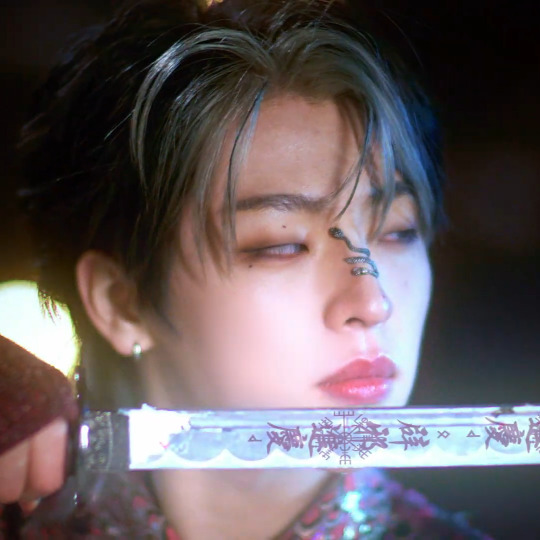
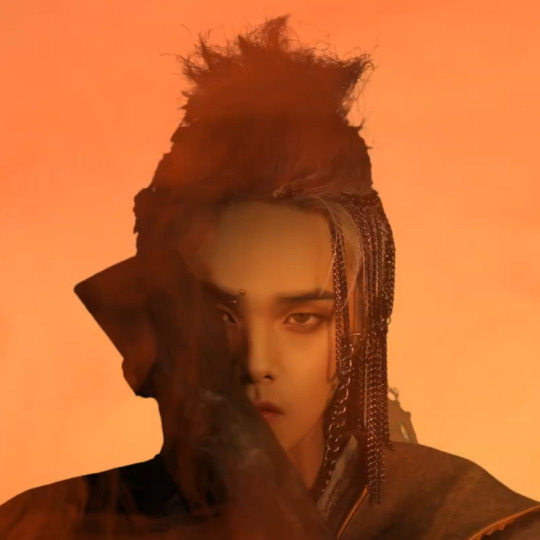
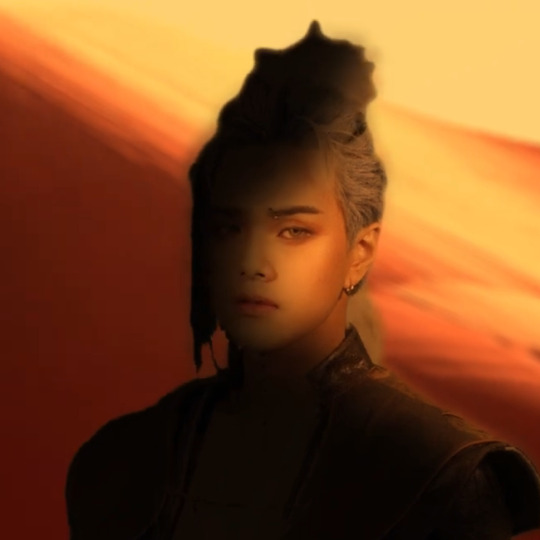





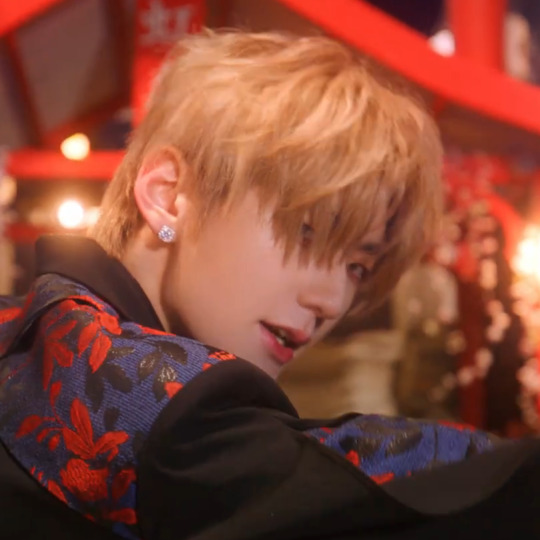
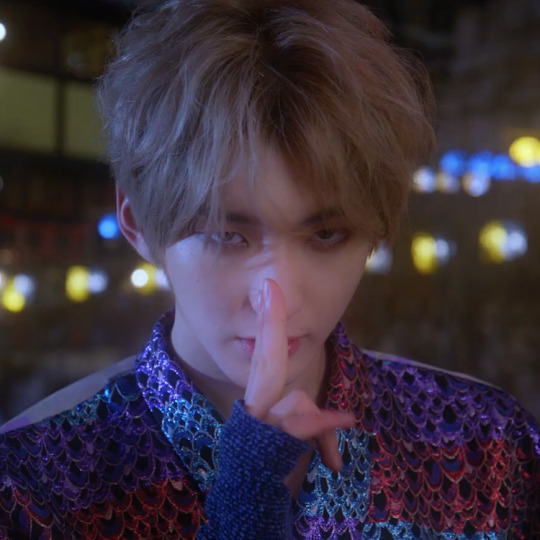

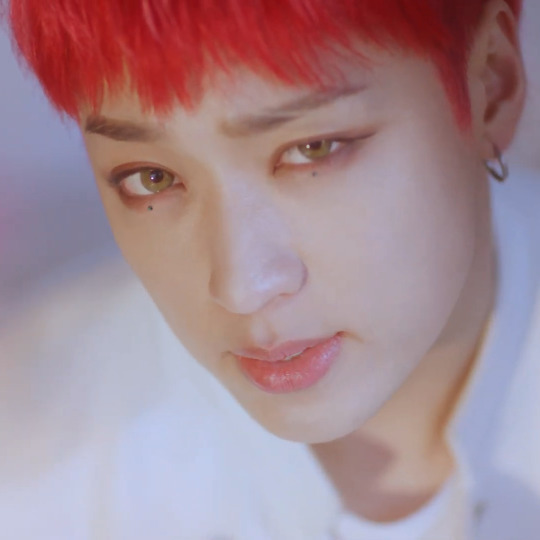
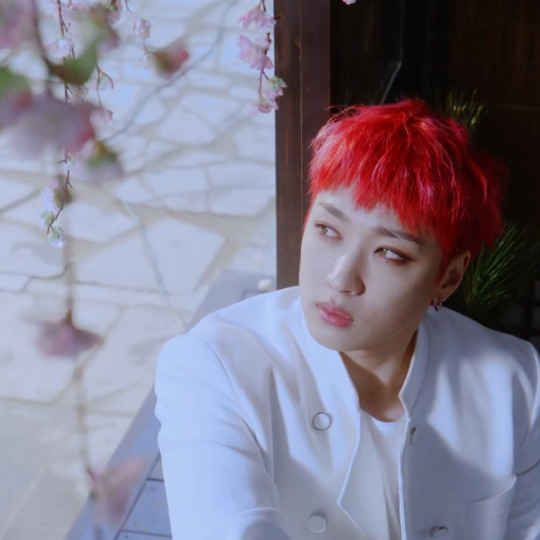

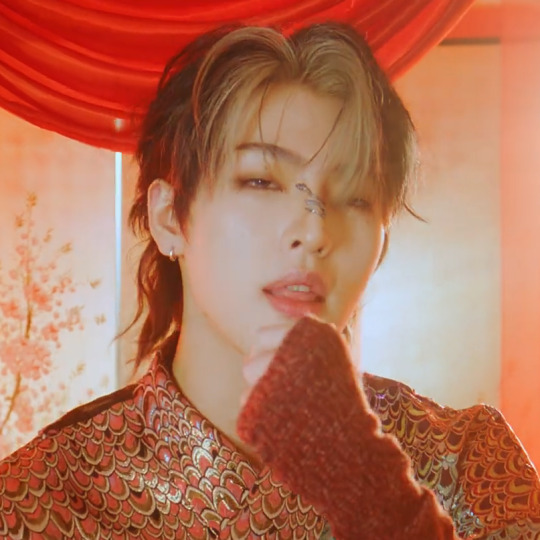






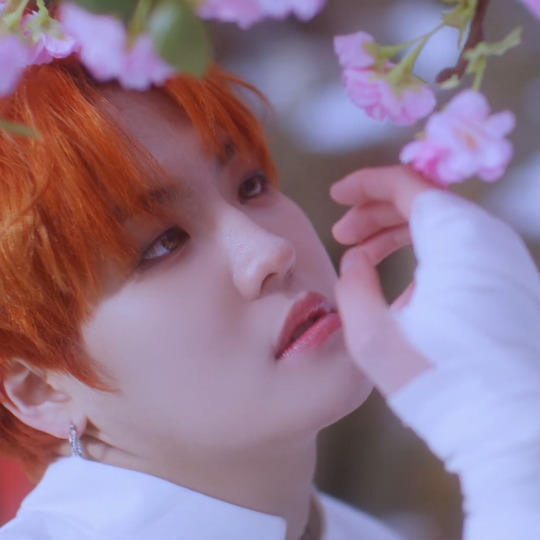

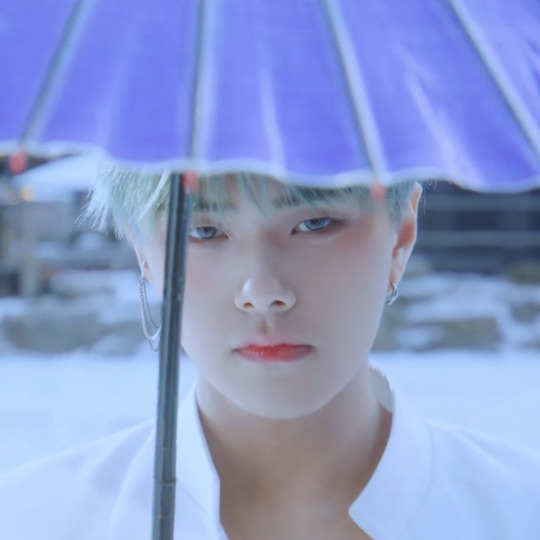




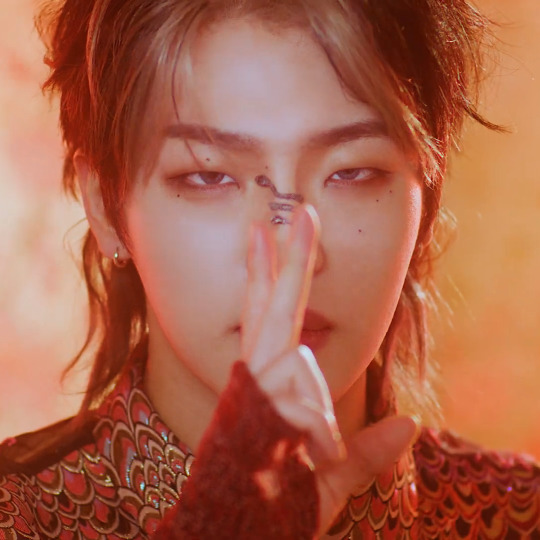

#kingdom#kingdom gfent#킹덤#dystopia#kingdom dystopia#kingdom kpop#kpop#arhur#ivan#dann#louis#mujin#jahan#hwon#icons#icon set#kpop icons
7 notes
·
View notes
Text
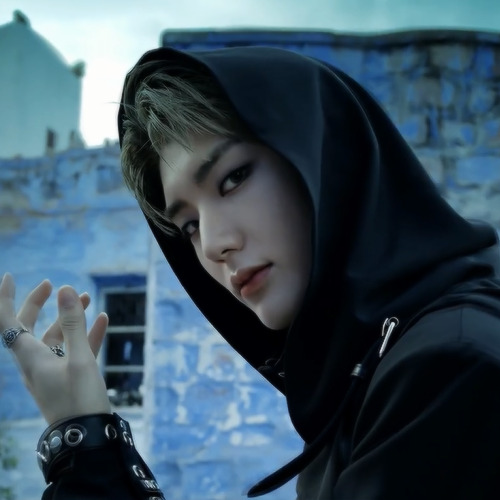
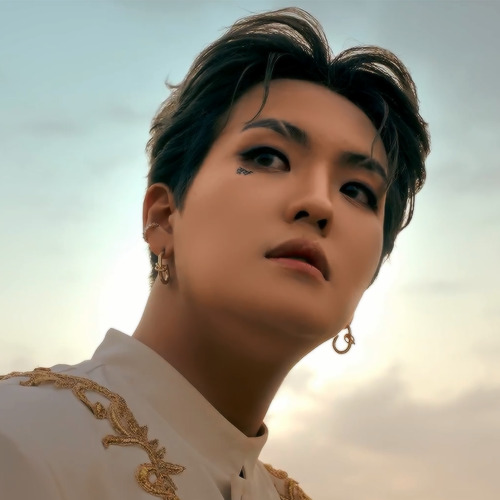
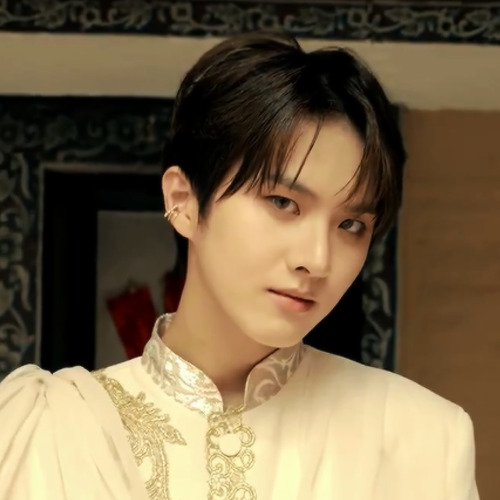



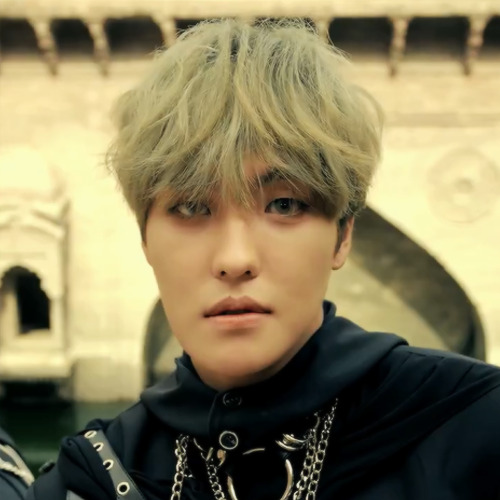





☆★ like or reblog if you saved + ^_^ !
#icons#kpop icons#hwon icons#louis icons#ivan icons#arthur icons#dann icons#mujin icons#jahan icons#kingdom icons#hwon#louis#ivan#arthur#dann#mujin#jahan#kingdom
6 notes
·
View notes
Photo

Icons of Bulgaria
Introduction to Bulgarian Icons
Bulgarian icons have a history that stretches back over a thousand years. This rich tradition is closely linked to two major events in Bulgaria’s past.
Adoption of Christianity in 865
In 865, Bulgaria became the first among the Slavic nations to adopt Christianity as its official religion. This event marked the beginning of Bulgarian iconography, a significant development in Bulgarian art. Following this change, artists from the East, along with Byzantine missionaries, came to Bulgaria to decorate the new Christian temples. Bulgarian icon-painting adopted the styles of Byzantine and Eastern Orthodox art but also developed a unique national character.
Early Bulgarian Icons
In the 9th and 10th centuries, ceramic icons became popular in Bulgaria. These were often mass-produced, as evidenced by the discovery of furnaces and workshops for glazed ceramic tiles in Patleina, near the old Bulgarian capital of Preslav. One of the most famous icons from this period is the icon of St. Theodor Stratilatus, created in the 9th-10th centuries. It consists of 20 glazed tiles and showcases the best artistic traditions of the Orient, particularly Cappadocia. However, the technique used in Bulgarian icon-painting was unique and not known in the East at the time. This highlights the First Bulgarian State’s contribution to Orthodox art Tours Bulgaria.
The Golden Age of Turnovo
During the 13th and 14th centuries, Turnovo, the capital of the Second Bulgarian Kingdom, experienced a cultural and artistic renaissance. This period is often referred to as the “golden age” of Patriarch Eftimii’s literary reform, which greatly influenced Orthodox Slavic literature and the Turnovo art school. The rock temples near Ivanovo in the Rousse district feature exceptionally fine frescoes, representing the pinnacle of Bulgarian art from the Paleologus renaissance. Another notable example is the exquisite two-sided icon, painted with professional artistry, which was presented around 1395 to the chapel of the Poganovski Monastery by Helen Paleologus, a granddaughter of the Bulgarian Tsar Ivan-Alexander.
The Impact of Ottoman Rule
The second significant event affecting Bulgarian iconography was the fall of Bulgaria to the Ottoman Empire. From 1393 onwards, the Bulgarian Church lost the support and funding of the state and its own patriarchate. This had a detrimental impact on church art, and the planned destruction of monasteries and churches led to the loss of many icons. Despite this, icon painting continued, though its development was uneven.
Continuation of Icon Painting
Even under Ottoman rule from 1396 to 1878, Bulgarian icon painting persisted. Although the progression was not smooth, Bulgarian artists managed to keep the tradition alive.
The history of Bulgarian icons is a testament to the resilience and creativity of Bulgarian artists. Despite facing significant challenges, particularly during the Ottoman period, the tradition of icon-painting has remained a vital part of Bulgarian cultural heritage. The unique blend of Eastern and national elements in Bulgarian icons continues to be celebrated and preserved today.
0 notes
Photo

Icons of Bulgaria
Introduction to Bulgarian Icons
Bulgarian icons have a history that stretches back over a thousand years. This rich tradition is closely linked to two major events in Bulgaria’s past.
Adoption of Christianity in 865
In 865, Bulgaria became the first among the Slavic nations to adopt Christianity as its official religion. This event marked the beginning of Bulgarian iconography, a significant development in Bulgarian art. Following this change, artists from the East, along with Byzantine missionaries, came to Bulgaria to decorate the new Christian temples. Bulgarian icon-painting adopted the styles of Byzantine and Eastern Orthodox art but also developed a unique national character.
Early Bulgarian Icons
In the 9th and 10th centuries, ceramic icons became popular in Bulgaria. These were often mass-produced, as evidenced by the discovery of furnaces and workshops for glazed ceramic tiles in Patleina, near the old Bulgarian capital of Preslav. One of the most famous icons from this period is the icon of St. Theodor Stratilatus, created in the 9th-10th centuries. It consists of 20 glazed tiles and showcases the best artistic traditions of the Orient, particularly Cappadocia. However, the technique used in Bulgarian icon-painting was unique and not known in the East at the time. This highlights the First Bulgarian State’s contribution to Orthodox art Tours Bulgaria.
The Golden Age of Turnovo
During the 13th and 14th centuries, Turnovo, the capital of the Second Bulgarian Kingdom, experienced a cultural and artistic renaissance. This period is often referred to as the “golden age” of Patriarch Eftimii’s literary reform, which greatly influenced Orthodox Slavic literature and the Turnovo art school. The rock temples near Ivanovo in the Rousse district feature exceptionally fine frescoes, representing the pinnacle of Bulgarian art from the Paleologus renaissance. Another notable example is the exquisite two-sided icon, painted with professional artistry, which was presented around 1395 to the chapel of the Poganovski Monastery by Helen Paleologus, a granddaughter of the Bulgarian Tsar Ivan-Alexander.
The Impact of Ottoman Rule
The second significant event affecting Bulgarian iconography was the fall of Bulgaria to the Ottoman Empire. From 1393 onwards, the Bulgarian Church lost the support and funding of the state and its own patriarchate. This had a detrimental impact on church art, and the planned destruction of monasteries and churches led to the loss of many icons. Despite this, icon painting continued, though its development was uneven.
Continuation of Icon Painting
Even under Ottoman rule from 1396 to 1878, Bulgarian icon painting persisted. Although the progression was not smooth, Bulgarian artists managed to keep the tradition alive.
The history of Bulgarian icons is a testament to the resilience and creativity of Bulgarian artists. Despite facing significant challenges, particularly during the Ottoman period, the tradition of icon-painting has remained a vital part of Bulgarian cultural heritage. The unique blend of Eastern and national elements in Bulgarian icons continues to be celebrated and preserved today.
0 notes